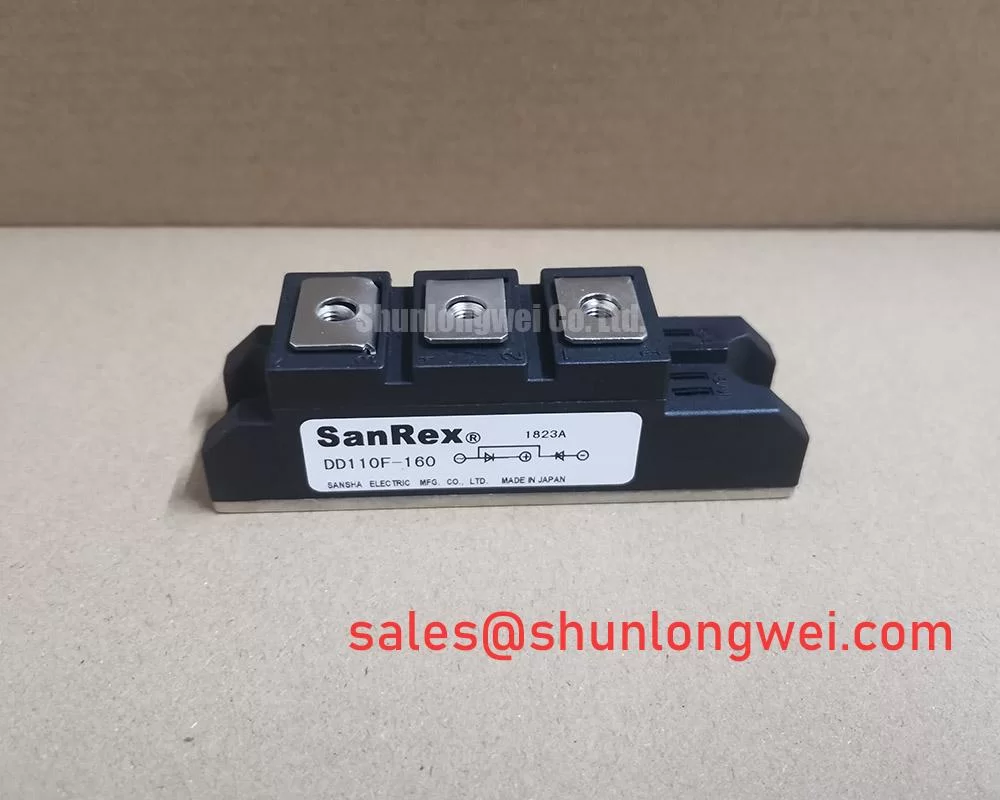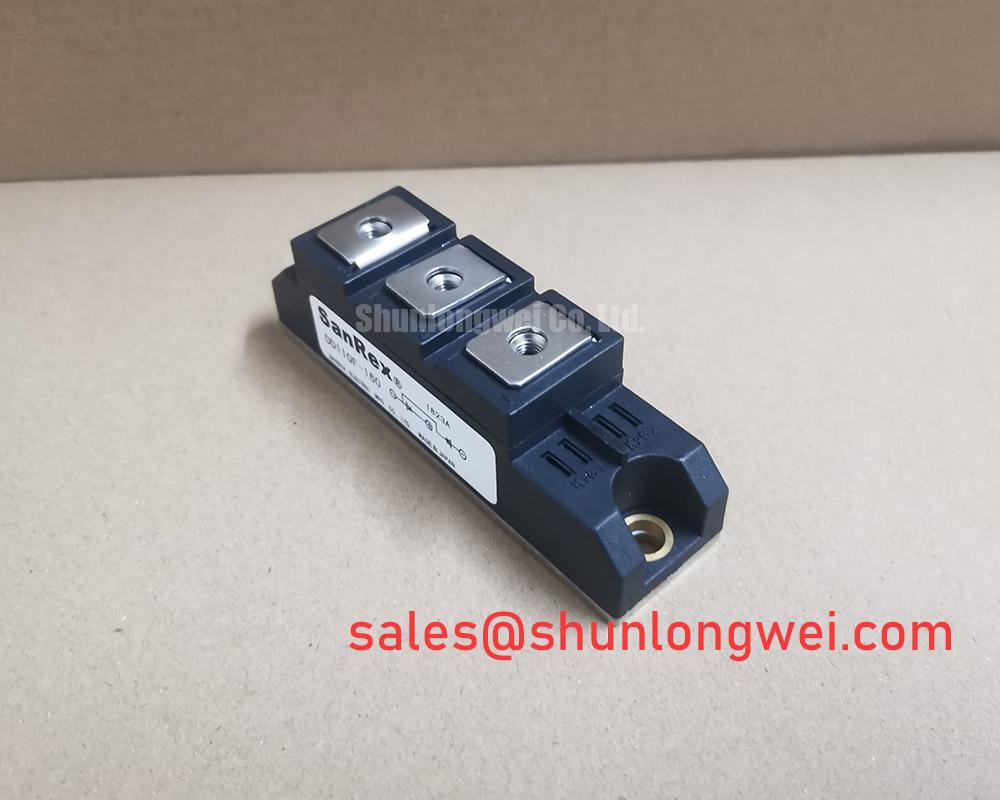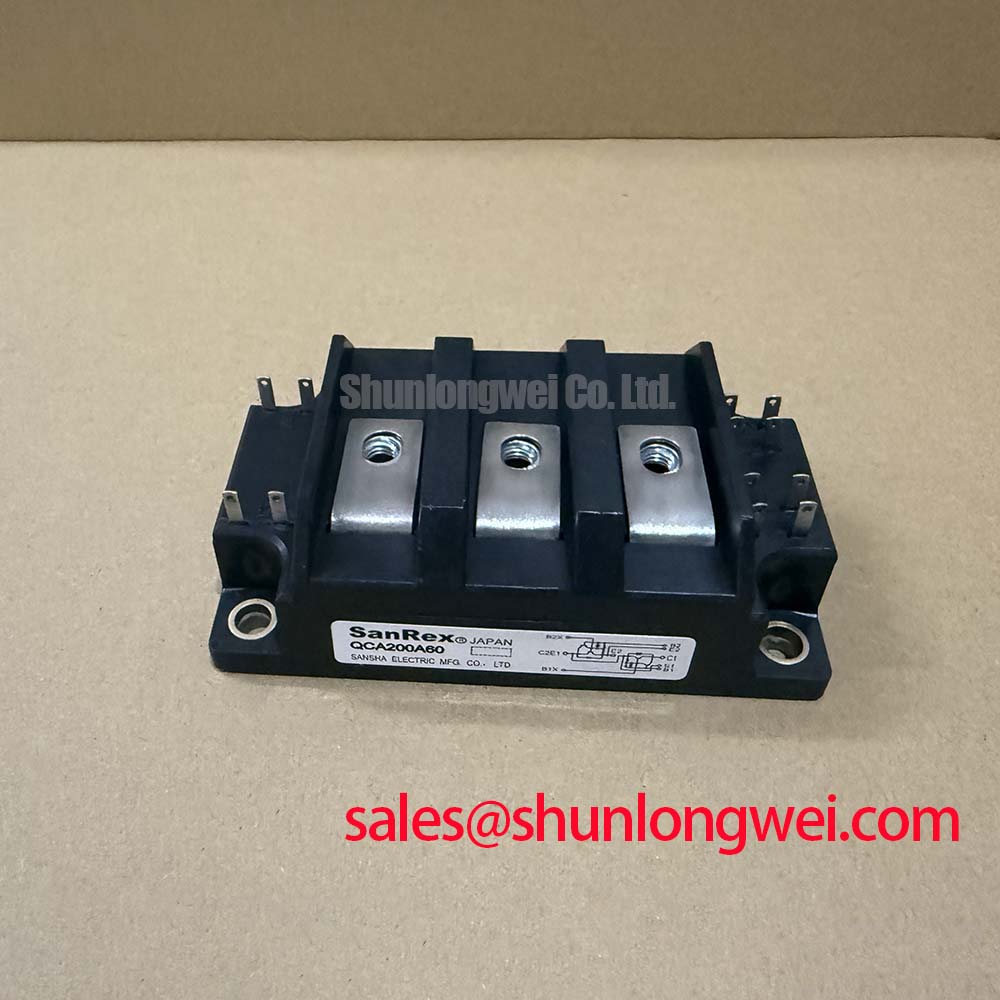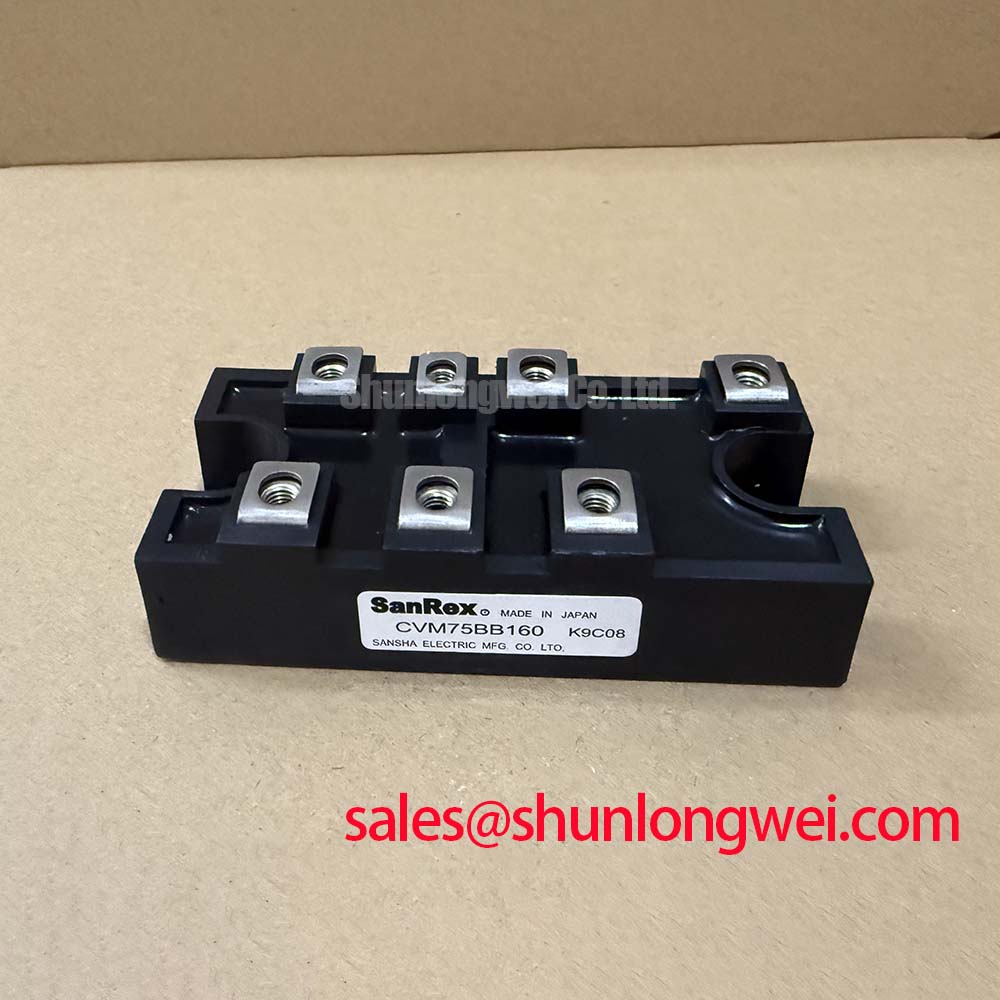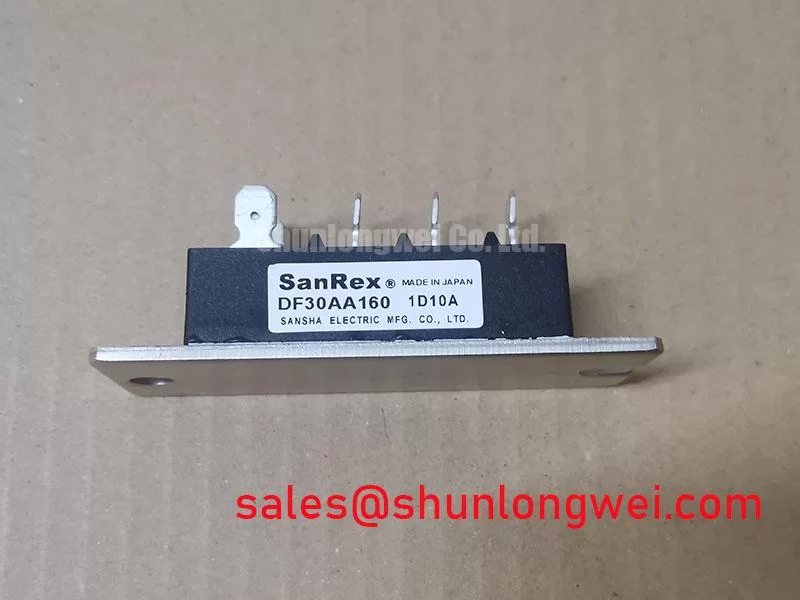Content last revised on November 15, 2025
Sanrex DD110F-160 Diode Module: 1600V Rectifier Analysis
Engineered for robust thermal performance and long-term reliability in high-voltage industrial power systems, the Sanrex DD110F-160 is a dual diode rectifier module. It delivers a core specification of 1600V | 110A | Rth(j-c) 0.24°C/W. Key benefits include superior thermal stability and high electrical isolation. This module directly addresses the engineering challenge of maintaining operational integrity under significant thermal cycling by utilizing glass-passivated junctions, which enhance device longevity and prevent premature failure.
Intra-Series Comparison & Positioning
System Positioning: Where the DD110F-160 Excels
The DD110F-160 is strategically positioned for power systems where voltage headroom and thermal stability are prioritized over ultra-high frequency switching. Compared to standard 1200V modules, its 1600V repetitive peak reverse voltage (VRRM) provides a crucial safety margin, making it an excellent fit for applications running on 480V to 690V AC lines, where transient overvoltages are a significant concern. While some modules may offer slightly lower forward voltage drops, the DD110F-160's strength lies in its robust thermal design and high surge current capability (IFSM of 2500A). This focus on durability ensures dependable performance in environments with fluctuating loads and potential fault conditions, distinguishing it from components designed purely for nominal operating efficiency.
This design philosophy makes it a valuable building block in systems where reliability directly impacts operational uptime and cost. For designs requiring a similar voltage rating but different current handling or topology, exploring related components such as the MDD95-12N1B may provide alternative solutions for specific system architectures.
Application Scenarios & Value
Operational Value in High-Stress Power Systems
The DD110F-160's technical specifications translate directly to enhanced reliability and performance in several demanding industrial applications. Its combination of high voltage rating and robust thermal management makes it a primary choice for the input rectification stages of industrial equipment.
- Variable Frequency Drives (VFDs): In the front-end rectifier of VFDs, the module efficiently converts AC line voltage to the DC bus voltage. Its 1600V rating provides resilience against line voltage swells common in industrial plants, preventing rectifier failure and protecting downstream components like the IGBT Module inverter stage.
- Industrial Power Supplies & UPS: For high-power DC supplies and uninterruptible power supply (UPS) systems, the module's 110A average forward current and high surge survivability ensure a stable and reliable DC source, even during inrush current events or load steps.
- DC Motor Controls: The DD110F-160 serves as a dependable rectifier in armature voltage controllers for large DC motors, providing the stable DC power required for precise speed and torque regulation in machinery such as elevators, cranes, and industrial mixers.
What is the key benefit of its high isolation voltage? The 2500V isolation rating ensures safety and regulatory compliance by preventing high voltage from reaching control circuits or the chassis. For industrial drives where system reliability is paramount, the Sanrex DD110F-160's robust thermal design makes it a superior choice for minimizing maintenance cycles and downtime.
Technical Deep Dive
A Closer Look at Thermal and Electrical Integrity
Two key parameters underscore the engineering focus of the Sanrex DD110F-160: its thermal resistance and electrical isolation. These specifications are foundational to its performance in demanding power conversion environments.
First, the Thermal Resistance (Rth(j-c)) is rated at 0.24 °C/W per device. This value is critical for thermal design. Think of thermal resistance as the bottleneck in a pipe; a lower number signifies a wider pipe, allowing heat to flow more easily from the active semiconductor junction to the module's case and, ultimately, to the heatsink. This efficient heat transfer is crucial for maintaining the junction temperature well below its 150°C maximum limit, even under heavy electrical loads. Efficient Thermal Management directly contributes to a longer operational lifespan and allows for more compact system designs by potentially reducing heatsink size.
Second, the Isolation Voltage (VISOL) of 2500V (AC, for 1 minute) provides a robust barrier between the high-power circuit and the module's baseplate. This electrical isolation is a critical safety feature, preventing potential shock hazards and protecting sensitive, low-voltage control electronics from catastrophic failure in the event of a fault. The use of glass-passivated junctions not only enhances voltage blocking stability over time but also contributes to this reliable isolation, a key consideration for systems that must comply with stringent industrial safety standards.
Key Parameter Overview
Core Electrical and Thermal Specifications
The following parameters from the official datasheet are central to the evaluation and integration of the DD110F-160. For a complete list of specifications and performance curves, please refer to the product documentation.
| Parameter | Value | Condition |
|---|---|---|
| Repetitive Peak Reverse Voltage (VRRM) | 1600 V | - |
| Average Forward Current (IF(AV)) | 110 A | TC = 101°C |
| Surge Forward Current (IFSM) | 2500 A | 50Hz Half Sine Wave, 1 shot |
| Max Junction Temperature (Tjmax) | 150 °C | - |
| Thermal Resistance, Junction to Case (Rth(j-c)) | 0.24 °C/W | Per Device |
| Isolation Voltage (VISOL) | 2500 V | AC, 1 minute |
Engineers are advised to Download the Datasheet to fully understand the device's Safe Operating Area (SOA) and derating curves, which are essential for robust system design. For further reading on interpreting these critical numbers, see our guide on decoding power module datasheets.
Design and Integration Outlook
Integrating the DD110F-160 provides a strategic advantage for next-generation industrial systems focused on Total Cost of Ownership (TCO). Its inherent robustness allows designers to engineer power conversion stages with greater thermal margins, reducing the risk of field failures and associated warranty costs. As industrial automation and electrification trends accelerate, the demand for reliable, high-voltage power components like the DD110F-160 will continue to grow. Specifying such components early in the design cycle is a proactive step toward creating systems that are not only powerful and efficient but also exceptionally durable, ensuring they meet the long-term operational demands of Industry 4.0 environments.

